|
Printables |
PowerPoints |
Online exercises |
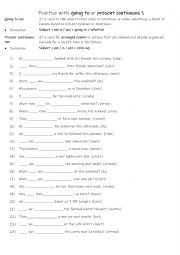
|
A1- A2 Practise with going to or present continuous 1
Students should learn "going to" and present continuous for future plans because these structures allow them to talk about the future with accuracy and flexibility. "Going to" is used for planned actions or intentions (e.g., I�m going to visit my grandmother tomorrow), while the present continuous is used for arrangements or scheduled events, often...
Level: elementary
Age: 9-100
Type: worksheet
Downloads: 108
|
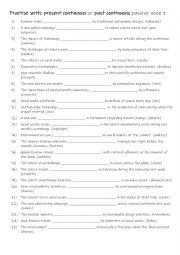
|
A2+-B1 Practise with passive voice: present continuous or past continuous 1
Learning the future continuous and future perfect tenses is really essential for expressing specific future actions and time relationships. The future continuous (e.g., I will be working at 3 PM tomorrow) describes actions that will be in progress at a particular moment in the future, which is useful for planning or predicting ongoing events. The f...
Level: intermediate
Age: 10-100
Type:
Downloads: 112
|
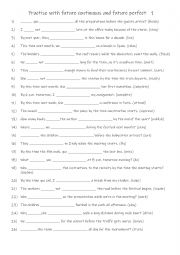
|
A2-B1 Practise with future continuous and future perfect 1
Learning the future continuous and future perfect tenses is really essential for expressing specific future actions and time relationships. The future continuous (e.g., I will be working at 3 PM tomorrow) describes actions that will be in progress at a particular moment in the future, which is useful for planning or predicting ongoing events. The f...
Level: intermediate
Age: 10-100
Type: worksheet
Downloads: 111
|
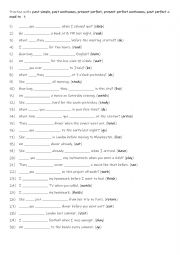
|
A2+-B1 Practise with past simple, past continuous, present perfect, present perfect continuous, past perfect & used to 1
Practising these tenses helps students express different aspects of time and actions effectively. The past simple is vital for describing completed actions, while the past continuous sets scenes or shows interruptions in the past. The present perfect connects past actions to the present, and the present perfect continuous highlights ongoing or repe...
Level: intermediate
Age: 9-100
Type:
Downloads: 100
|
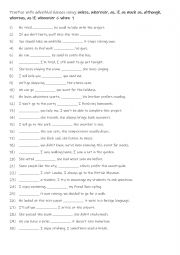
|
A2+-B1 10 adverbial clauses 1
Learning adverbial clauses using words like unless, wherever, as, if, as much as, although, whereas, as if, whenever and when helps students express complex relationships between ideas, such as condition, time, contrast, and manner. These clauses enrich their communication by allowing them to create detailed and nuanced sentences. Mastering these s...
Level: intermediate
Age: 9-100
Type:
Downloads: 123
|
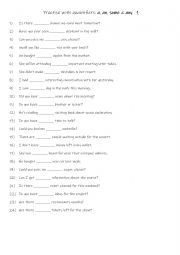
|
A1-A2 Practise with quantifiers a , an , some & any 1
Practising quantifiers such as a, an, some and any is crucial for helping students communicate effectively in English. These quantifiers are used to indicate amounts, differentiate between countable and uncountable nouns, and express affirmative, negative, or interrogative contexts. Understanding their proper usage not only enhances grammatical acc...
Level: elementary
Age: 8-100
Type:
Downloads: 116
|
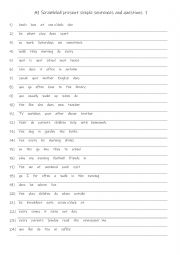
|
A1 Scrambled present simple sentences and questions 1
Practising scrambled present simple sentences and questions helps students understand correct word order, including subject-verb agreement and the use of auxiliaries in negatives and questions. It enhances their grammatical accuracy, boosts critical thinking as they rearrange words meaningfully, and improves their ability to form sentences quickly ...
Level: elementary
Age: 8-100
Type:
Downloads: 108
|
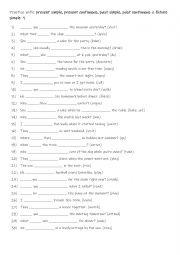
|
A1-A2 Practise with present simple, present continuous, past simple, past continuous & future simple 1
Students need to use present simple, present continuous, past simple, past continuous, and future simple to communicate effectively and express time-related ideas clearly in English. The present simple is used for routines, habits, and facts, while the present continuous describes ongoing or temporary actions. The past simple narrates completed eve...
Level: elementary
Age: 8-100
Type:
Downloads: 111
|
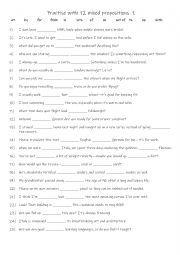
|
A1+-A2 Practise with 12 mixed prepositions 1
Students need to learn prepositions like at, by, for, from, in, into, of, on, out of, to, up, and with because these prepositions are essential for constructing clear and accurate sentences in English. Prepositions show relationships between words, such as location ("at the park"), direction ("into the room"), time ("by 5 p.m."), and cause ("for hi...
Level: elementary
Age: 8-100
Type:
Downloads: 130
|
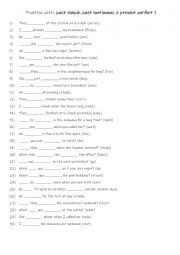
|
A1+ A2 Practise with past simple, past continuous & present perfect 1
Mastering past simple, past continuous, and present perfect is essential for clear and accurate communication in English. The past simple is used for completed actions with a specific time reference, such as "I visited London." The past continuous describes ongoing actions at a specific moment in the past or sets the scene, like "I was reading when...
Level: elementary
Age: 8-100
Type:
Downloads: 122
|
|
|
|
|












